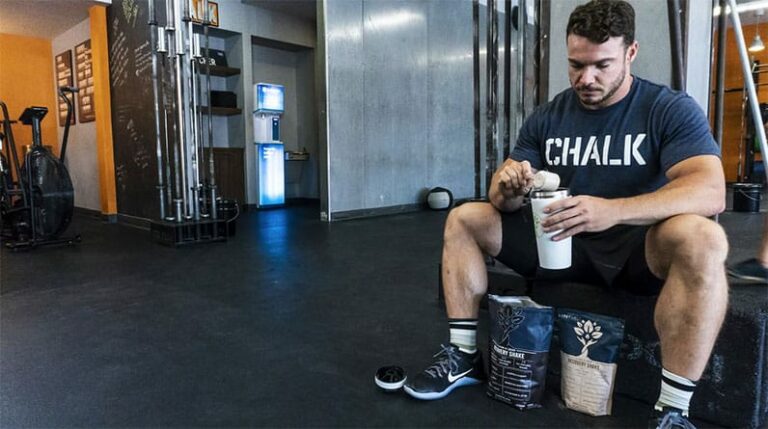How to Get Six-Pack Abs in 30 Days
Six-Pack Abs in 30 Days
If you’ve ever tried to get six-pack abs, you know that they aren’t easy to achieve. There are a lot of strange diets and exercises out there that promise to help you develop those abs in no time.
Fortunately, there is a way to develop those abs that’s easy, sustainable and will help you see the results you want. We can’t promise this will happen in 30 days, because it depends on your current state. For some, 30 days is reasonable, and here are 5 tips to help you get those ripped abs as quickly as possible.
1. Eat Clean
Eating clean and exercising daily is essential for getting six-pack abs. By following a healthy diet and avoiding the wrong foods, you can achieve your goal quickly.
While there are a number of factors that contribute to getting six-pack abs, diet and exercise remain the most important. If you’re not eating a healthy diet or if you’re not exercising regularly, you won’t be able to achieve the results you want.
A diet rich in fiber, healthy fats and protein, fruits, vegetables, whole grains, nuts, seeds, legumes, fatty fish, and tea can accelerate your weight loss and improve your body composition. It also helps prevent hunger and keeps you feeling full between meals, a crucial benefit for dieters looking to get abs.
When it comes to the best food for your abs, choose whole grains, fruits, vegetables, healthy fats, and lean protein over simple carbohydrates like white bread, rice, or pasta. Complex carbohydrates boost your metabolism, promote fat burning, and keep you full between meals.
Ideally, you should aim for a low body-fat percentage of 10-14 percent to show your abs. This number varies depending on your fitness level and genetics, but it’s a great starting point. To achieve this, it’s important to stick with an exercise routine that incorporates both strength and cardio exercises. Additionally, you should follow a healthy diet and drink plenty of water to speed up your results.
Don’t forget to eat a healthy diet that includes plenty of lean protein and fruits and vegetables. These nutrients can promote satiety and repair muscle tissue. It’s also a good idea to limit your intake of added sugars, which can make it harder to lose weight and develop abs.
2. Exercise Daily
The best way to burn calories is through a combination of cardio and HIIT, both of which can help you lose fat around your abdomen. Aim to spend at least three hours each week on cardio or HIIT, says Ashley Hagensick, RDN, a sports dietitian with Intermountain Healthcare in Salt Lake City.
Aside from burning calories, exercise can also strengthen and tone your abs, which helps give them more definition. Some good ab exercises include crunches, prone dips and planks, according to Brooke Olson, CPT, a personal trainer in New York City.
You may also want to add exercises like mountain climbers and hanging ab curls into your workout routine. These moves target the rectus abdominis muscle, which is the main muscle in your midsection and the one that makes your abs look toned and defined.
As you’re doing your ab exercises, keep your head up and chest up to prevent injury. Hold this position for about 30 seconds, then increase the amount of time you hold it for.
While cardio and resistance training will help burn fat and build muscle, the majority of your ab work should be focused on core exercises. A strong core supports your posture, enhances balance and coordination, and helps with mobility and joint stability.
Exercises that focus on the abs include crunches, planks, mountain climbers, hanging ab curls, and other workouts that challenge the lower abdominal muscles. These abs exercises are effective in toning and strengthening the core, but they won’t reveal your ripped abs until you lose excess fat around your stomach.
3. Drink Water
The most important thing you can do if you want to get six-pack abs is drink enough water. It helps to prevent bloating, flush out toxins, and keeps your digestive tract moving properly. It also allows you to eat more of the right foods and maintain a feeling of fullness.
A good rule of thumb is to drink several tall glasses or bottles of water per day. This includes drinking water before and during workouts.
Having a good amount of water also helps to keep your skin hydrated. It also helps to remove excess fat from your body.
Along with water, try to include a variety of high-quality protein sources in your diet. Protein helps to increase muscle mass and improve metabolism. Some popular sources of protein include lean meats, fish, poultry, beans, and nuts.
Consuming a healthy amount of complex carbohydrates is also a great idea. These carbs come from fruit, vegetables, and legumes. These foods contain water and are rich in fiber, which can help to reduce bloating and maintain a feeling of fullness.
4. Sleep Well
Sleep is vital for your body and your mind. It helps you to repair and regenerate tissues, replace chemicals, process information and even learn new things.
But it can be difficult to get a good night’s rest when you have a busy schedule, chronic health conditions or are experiencing stress. Insomnia is a common problem for many people, and it has been linked to a greater risk of mental health problems such as depression or anxiety.
One of the easiest ways to combat this is to develop a bedtime routine, including a regular and consistent sleep schedule. It can help you fall asleep faster and stay asleep for longer. This routine also helps your body and mind recognize when it’s time to relax.
Another strategy is to keep a journal and write down any worries or concerns that are keeping you up at night. It can help you to unburden your thoughts and reduce rumination, which is a form of sleep deprivation that can make it difficult to fall asleep.
If you have trouble falling or staying asleep, talk to your doctor about any underlying medical conditions that may be contributing to your insomnia. For example, if you’re suffering from a chronic medical condition, such as diabetes, your doctor may recommend a treatment that can help you to sleep better.
If you’re trying to get six-pack abs in 30 days, it’s a good idea to start by learning how to sleep well and making sure that your diet and workout routine are both sustainable. This will allow you to enjoy the results of your hard work and keep the progress going.
5. Stay Motivated
Getting six-pack abs requires commitment, dedication and hard work. Ultimately, it’s not about getting the perfect diet or the best exercises; it’s about finding the right mix of them to get you where you want to be.
Those who have the motivation to make it happen will find that it’s a lot easier to stick to their plan. They’ll also be able to see results faster and have more motivation to keep working at it in the future.
One of the most effective ways to stay motivated is to set small, manageable goals for each week and day of your exercise routine. These can be as simple as saying, “I will do a total of five sit-ups today.”
Once you reach these smaller objectives, you’ll have a much easier time seeing progress and sticking with your routine.
In addition to setting small, achievable goals, you should also set larger, outcome-oriented ones. These should be based on a fairly realistic timeline for achieving them, says Harris.
If you’re looking to lose weight, setting a goal to lose 10 to 20 pounds in 30 days is a great way to keep yourself motivated. It can also help you make better food choices to achieve that goal, and it gives you a sense of accomplishment in the days and weeks to come.
Six-Pack Abs in 30 Days
If you’ve ever tried to get six-pack abs, you know that they aren’t easy to achieve. There are a lot of strange diets and exercises out there that promise to help you develop those abs in no time.
Fortunately, there is a way to develop those abs that’s easy, sustainable and will help you see the results you want. We can’t promise this will happen in 30 days, because it depends on your current state. For some, 30 days is reasonable, and here are 5 tips to help you get those ripped abs as quickly as possible.
1. Eat Clean
Eating clean and exercising daily is essential for getting six-pack abs. By following a healthy diet and avoiding the wrong foods, you can achieve your goal quickly.
While there are a number of factors that contribute to getting six-pack abs, diet and exercise remain the most important. If you’re not eating a healthy diet or if you’re not exercising regularly, you won’t be able to achieve the results you want.
A diet rich in fiber, healthy fats and protein, fruits, vegetables, whole grains, nuts, seeds, legumes, fatty fish, and tea can accelerate your weight loss and improve your body composition. It also helps prevent hunger and keeps you feeling full between meals, a crucial benefit for dieters looking to get abs.
When it comes to the best food for your abs, choose whole grains, fruits, vegetables, healthy fats, and lean protein over simple carbohydrates like white bread, rice, or pasta. Complex carbohydrates boost your metabolism, promote fat burning, and keep you full between meals.
Ideally, you should aim for a low body-fat percentage of 10-14 percent to show your abs. This number varies depending on your fitness level and genetics, but it’s a great starting point. To achieve this, it’s important to stick with an exercise routine that incorporates both strength and cardio exercises. Additionally, you should follow a healthy diet and drink plenty of water to speed up your results.
Don’t forget to eat a healthy diet that includes plenty of lean protein and fruits and vegetables. These nutrients can promote satiety and repair muscle tissue. It’s also a good idea to limit your intake of added sugars, which can make it harder to lose weight and develop abs.
2. Exercise Daily
The best way to burn calories is through a combination of cardio and HIIT, both of which can help you lose fat around your abdomen. Aim to spend at least three hours each week on cardio or HIIT, says Ashley Hagensick, RDN, a sports dietitian with Intermountain Healthcare in Salt Lake City.
Aside from burning calories, exercise can also strengthen and tone your abs, which helps give them more definition. Some good ab exercises include crunches, prone dips and planks, according to Brooke Olson, CPT, a personal trainer in New York City.
You may also want to add exercises like mountain climbers and hanging ab curls into your workout routine. These moves target the rectus abdominis muscle, which is the main muscle in your midsection and the one that makes your abs look toned and defined.
As you’re doing your ab exercises, keep your head up and chest up to prevent injury. Hold this position for about 30 seconds, then increase the amount of time you hold it for.
While cardio and resistance training will help burn fat and build muscle, the majority of your ab work should be focused on core exercises. A strong core supports your posture, enhances balance and coordination, and helps with mobility and joint stability.
Exercises that focus on the abs include crunches, planks, mountain climbers, hanging ab curls, and other workouts that challenge the lower abdominal muscles. These abs exercises are effective in toning and strengthening the core, but they won’t reveal your ripped abs until you lose excess fat around your stomach.
3. Drink Water
The most important thing you can do if you want to get six-pack abs is drink enough water. It helps to prevent bloating, flush out toxins, and keeps your digestive tract moving properly. It also allows you to eat more of the right foods and maintain a feeling of fullness.
A good rule of thumb is to drink several tall glasses or bottles of water per day. This includes drinking water before and during workouts.
Having a good amount of water also helps to keep your skin hydrated. It also helps to remove excess fat from your body.
Along with water, try to include a variety of high-quality protein sources in your diet. Protein helps to increase muscle mass and improve metabolism. Some popular sources of protein include lean meats, fish, poultry, beans, and nuts.
Consuming a healthy amount of complex carbohydrates is also a great idea. These carbs come from fruit, vegetables, and legumes. These foods contain water and are rich in fiber, which can help to reduce bloating and maintain a feeling of fullness.
4. Sleep Well
Sleep is vital for your body and your mind. It helps you to repair and regenerate tissues, replace chemicals, process information and even learn new things.
But it can be difficult to get a good night’s rest when you have a busy schedule, chronic health conditions or are experiencing stress. Insomnia is a common problem for many people, and it has been linked to a greater risk of mental health problems such as depression or anxiety.
One of the easiest ways to combat this is to develop a bedtime routine, including a regular and consistent sleep schedule. It can help you fall asleep faster and stay asleep for longer. This routine also helps your body and mind recognize when it’s time to relax.
Another strategy is to keep a journal and write down any worries or concerns that are keeping you up at night. It can help you to unburden your thoughts and reduce rumination, which is a form of sleep deprivation that can make it difficult to fall asleep.
If you have trouble falling or staying asleep, talk to your doctor about any underlying medical conditions that may be contributing to your insomnia. For example, if you’re suffering from a chronic medical condition, such as diabetes, your doctor may recommend a treatment that can help you to sleep better.
If you’re trying to get six-pack abs in 30 days, it’s a good idea to start by learning how to sleep well and making sure that your diet and workout routine are both sustainable. This will allow you to enjoy the results of your hard work and keep the progress going.
5. Stay Motivated
Getting six-pack abs requires commitment, dedication and hard work. Ultimately, it’s not about getting the perfect diet or the best exercises; it’s about finding the right mix of them to get you where you want to be.
Those who have the motivation to make it happen will find that it’s a lot easier to stick to their plan. They’ll also be able to see results faster and have more motivation to keep working at it in the future.
One of the most effective ways to stay motivated is to set small, manageable goals for each week and day of your exercise routine. These can be as simple as saying, “I will do a total of five sit-ups today.”
Once you reach these smaller objectives, you’ll have a much easier time seeing progress and sticking with your routine.
In addition to setting small, achievable goals, you should also set larger, outcome-oriented ones. These should be based on a fairly realistic timeline for achieving them, says Harris.
If you’re looking to lose weight, setting a goal to lose 10 to 20 pounds in 30 days is a great way to keep yourself motivated. It can also help you make better food choices to achieve that goal, and it gives you a sense of accomplishment in the days and weeks to come.






